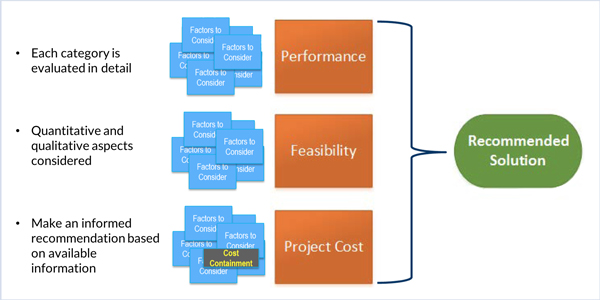By Rory D. Sweeney
Stakeholders last week plowed through several hours of material at a special PJM Planning Committee session on whether the RTO should include cost containment provisions in its analysis of competitive bids for new transmission, but they ended up tabling what has become the most important issue.
The wide-ranging discussion covered the results of a stakeholder poll and related comments, PJM’s proposal templates, proposed contract language regarding revenue requirement provisions and proposed changes for evaluating Order 1000 projects. However, stakeholders were unable to reach consensus on whether PJM’s criteria for selecting projects should weigh a developer’s commitment to a cap on the return on equity (ROE) it will seek during its ratemaking process at FERC. The issue received a significant amount of contentious discussion, including a consumer advocate presentation on the importance of such caps, but no decision was reached.
Alex Stern with Public Service Electric and Gas (PSEG) said he didn’t think the idea is consistent with applicable law and called it “a complete end-around” of Section 205 of the Federal Power Act.
“I am very concerned about enforceability,” he said.
Erik Heinle of Office of the People’s Counsel for the District of Columbia, who presented on the value of ROE caps, disagreed that the voluntary proposals ran afoul of FERC’s authority.
“We are very clear that FERC is the rate-maker. They should be the rate-maker,” he said. “I don’t think this makes it some sort of coercive issue where everybody has to do it.”
LS Power attorney Mike Engleman of Washington, D.C., firm Engleman Fallon also took issue with objections to the provisions.
“We completely disagree that this is outside what PJM can look at or do. PJM isn’t setting the rates. PJM is accepting a voluntary commitment of what the developer will do in filing at FERC,” he said. “The entire purpose of Order 1000 is to get the benefits of these types of proposals to ratepayers. … Nobody’s forcing PPL or PSEG or anybody else to make a proposal they don’t want to make.”
Representatives from fellow transmission owners PPL and Duquesne Light Co. backed Stern’s position, noting legal precedents for why the provisions wouldn’t stand. However, Ruth Ann Price, who represents the Delaware Division of the Public Advocate, challenged them to provide their cases.
“At the right time, they’ll be provided,” Stern responded. “That’s what we do when we go to FERC. This is not a legal proceeding.”
“What right time? Now is the right time. We’re discussing it,” Price said.
PJM staff attempted to reach agreement that everyone favored additional transparency and move on from the topic, but LS Power’s Sharon Segner insisted that it continue to be addressed.
“The ROE discussion is at the heart of what this discussion is supposed to be about,” she said. “It is not a discussion solely about transparency.”
The issue will be addressed again at the next special session on the issue on May 11.
Segner acknowledged some very “positive developments” in the proposal templates PJM presented, particularly on aspects regarding clear disclosures of cost commitments. PJM’s templates would create clear, uniform and organized proposal submissions that would make project comparison easier. Segner, with strong support from several consumer advocates, has largely led the push for cost-containment considerations and templates, having proposed her own set in recent meetings. (See PJM Stakeholders Explore Cost Containment Complexities.)
Segner also noted that LS has backed away from proposing any caps on operations and maintenance costs and won’t include them in its proposal to the Markets and Reliability Committee on May 24.
“We weren’t able to find any evidence that the market was responding robustly to [operations and maintenance] caps” in other RTO/ISO competitive windows, she said. “These other issues are bigger-ticket items to the ratepayers, so why not focus discussions there?”



